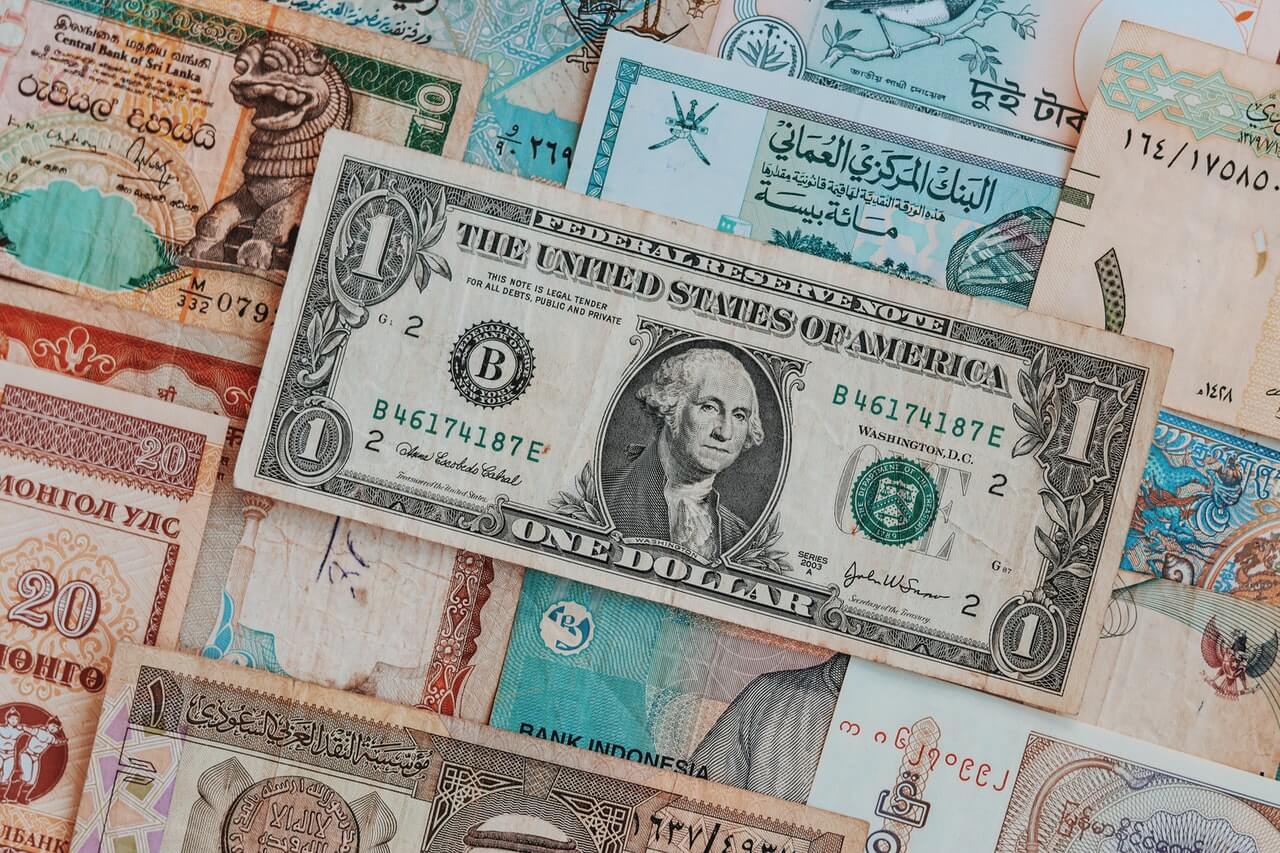The greenback is having its best run in about two decades.
For US consumers this may mean good news as it’s now cheaper to travel abroad or buy foreign-made products due to the favorable exchange rate. But what does this mean for your investments? Let’s have a look.
Why is the Dollar Going Up?
The dollar started its upward ascent when it became clear that the Federal Reserve would begin to tighten monetary policy after keeping rates near zero to help stimulate the economy in the wake of the pandemic.
In June, the Federal Reserve hiked interest rates by 75 basis points, its most aggressive move since 1994.
Analysts are also expecting another rate hike by the same margin this month. If this happens, this would spur the dollar higher.
Adding to the greenback’s allure is the stability it offers amid uncertain geopolitical developments, as seen by its surge following the Russian invasion of Ukraine in late February and China’s Covid-19 zero-tolerance lockdowns.
What Does a Rising Dollar Mean for Your Investments?
1. Stocks
A 2018 study by S&P Dow Jones Indices found that S&P 500 companies with the least dependence on foreign revenue tended to perform well when the dollar was strengthening.
The rising dollar is making life difficult for many global corporations. A rising dollar eats into their profits because it means less demand from consumers outside the United States.
This is because their local currencies are getting weaker against the dollar. So, companies making huge revenues from outside the United States tend to feel the impact of a rising dollar.
- Apple, for example, estimates a 3% drop in revenue due to a strong dollar.
- Microsoft has cut its revenue and profit outlook for its fourth fiscal quarter ending June 30, citing currency fluctuations.
- Procter & Gamble estimates that losses from the rising dollar would amount to a tune of $300 million after-tax headwinds to earnings for the fiscal year.
When investing in stocks, you may want to steer clear of companies that generate a significant part of their revenues from overseas. The irony is that the best companies in the US stock market are exposed to overseas markets.
2. Emerging Markets
Foreign governments that require US dollar reserves will end up paying relatively more to obtain those dollars.
This is especially important in emerging market economies.
When portfolio managers convert dollars into cheaper local currencies to buy foreign securities on local exchanges, it drives the daily net asset value of the fund lower.
In addition, emerging-market bond funds that issue dollar-denominated debt face the added risk of higher repayment costs and an increased risk of possible default.
3. Bonds
Bonds and stocks move in the opposite direction, so it is easy to glean the effect of the dollar on this asset class.
Whenever the Fed raises interest rates, this sends the value of the dollar higher, making it attractive for foreign investors to either convert and hold the dollar or invest in US debt instruments such as bonds.
As the dollar rises, investors in non-dollar currency usually convert funds to dollars to preserve wealth. This increase in demand, coupled with the Fed rate hikes sends bond yields higher.
4. Commodities
The dollar and commodities are inversely related.
When the dollar strengthens, commodities become more expensive in other, nondollar currencies.
This effect tends to have a negative influence on demand. As you would expect, when the dollar weakens, commodities prices in other currencies drop lower. This increases demand.
5. Gold
For centuries, gold has been used as a hedge against inflation.
When there is a weakness in the dollar, investors buy gold to preserve their wealth. In the same vein, a strong dollar means a fall in gold prices.
6. Cryptocurrencies
Bitcoin is still relatively new compared to other assets.
However, given the price action of Bitcoin and other digital tokens, we can reach a reasonable consensus on what to expect from movements in the dollar.
Judging from the performance of bitcoin and other cryptocurrencies this year against the backdrop of the dollar’s strength, we can say that cryptocurrencies are not favored by a rising dollar. This is because investors prioritize safe havens like bonds over risk assets like cryptocurrencies or stocks.
The Rising Dollar: Why You Should Invest Using Current Macro-insights
We are living in a different time where textbook economic theories are being refuted.
The pandemic-induced shutdown has altered the traditional relationship between financial assets. As such, some of the ideas outlined above may not work, just yet.
An example is a strong dollar amidst rising commodity prices. Usually, this is an inverse relationship. However, due to the war in Ukraine, supply chain bottlenecks, and trillions of dollars in circulation, both assets are on the rise.
Another example is the relationship between the dollar and emerging markets. A strong dollar tends to bode ill for emerging markets dependent on dollar-denominated debt. This is because it makes it harder for these regions to service this debt.
Today, however, many emerging-market regions are in excellent fiscal shape, with plenty of foreign-exchange reserves. In fact, those that supply fuel, fertilizer, food, and metals, as is the case for much of Latin America, actually stand to benefit from the global supply squeeze.
As such, formulating investment strategies using textbook economic analysis may not work as every asset has to be examined based on its risks and opportunities.
It is important that you use current macroeconomic insights to guide your investment decisions, or you could be making a wrong call.



